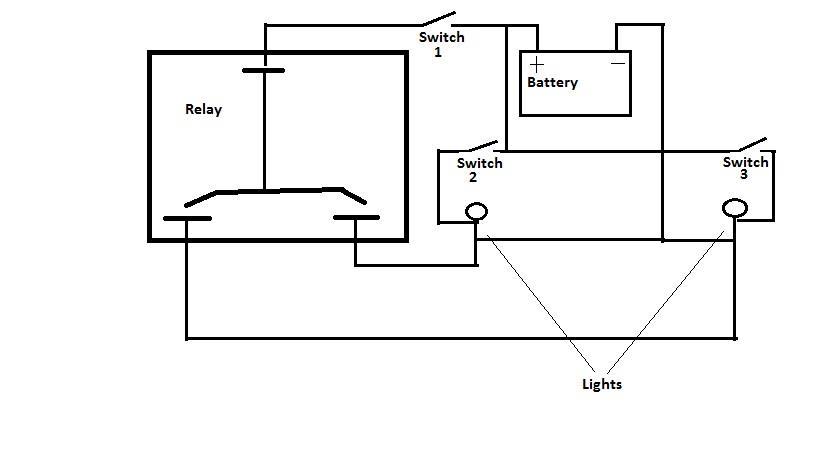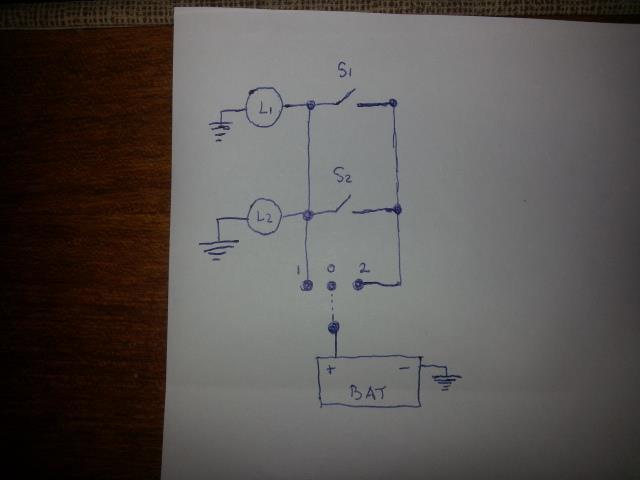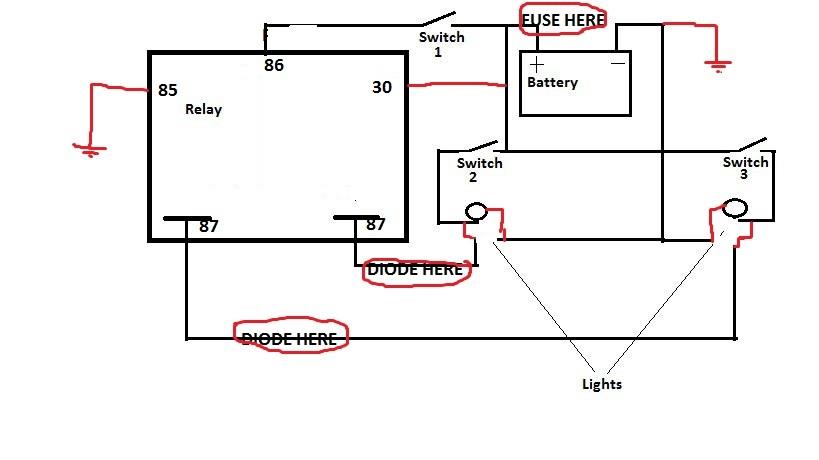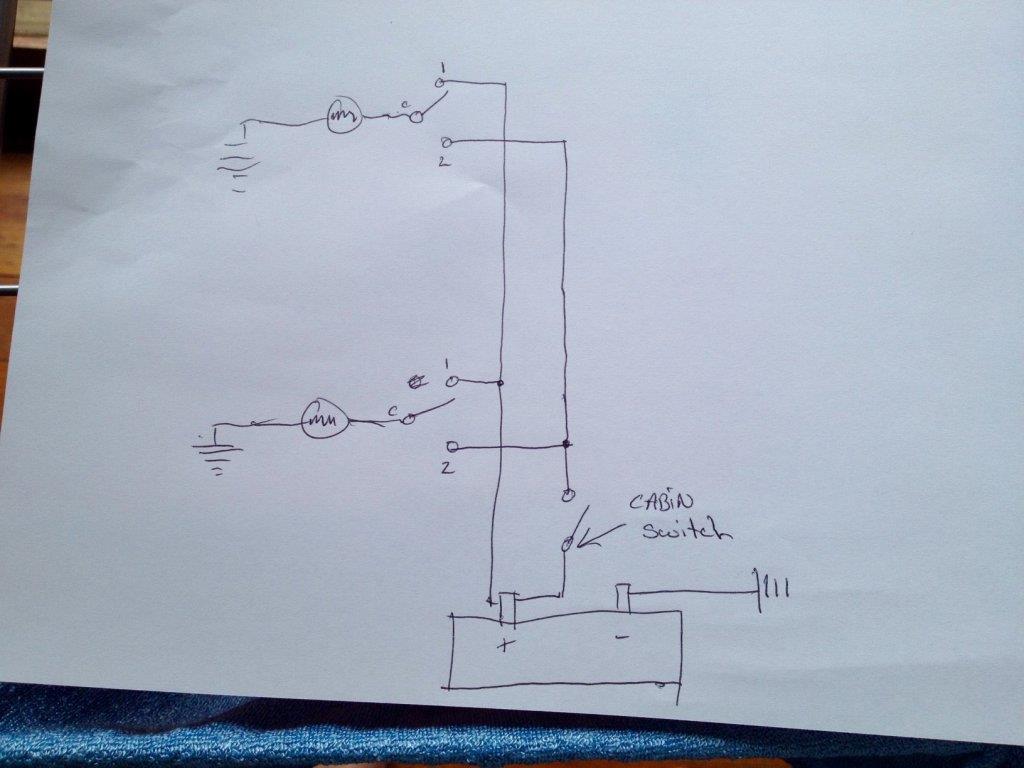Hi all I am after advice on what relay to use if there is even one out there that will do what I want.
the led flood lights which draw 2.25A each will be mounted on pivoting arms on the rear of the canopy on my ute the plan is to use them for reverse lights that both turn on with one switch in the cab and for flood lights for camping that I can turn on individually with switches on the rear so I need a relay with 2 powered terminals out of it that once turned off have no link between them anyway here is a rough diagram of what I want any help will be greatly appreciated

the led flood lights which draw 2.25A each will be mounted on pivoting arms on the rear of the canopy on my ute the plan is to use them for reverse lights that both turn on with one switch in the cab and for flood lights for camping that I can turn on individually with switches on the rear so I need a relay with 2 powered terminals out of it that once turned off have no link between them anyway here is a rough diagram of what I want any help will be greatly appreciated







